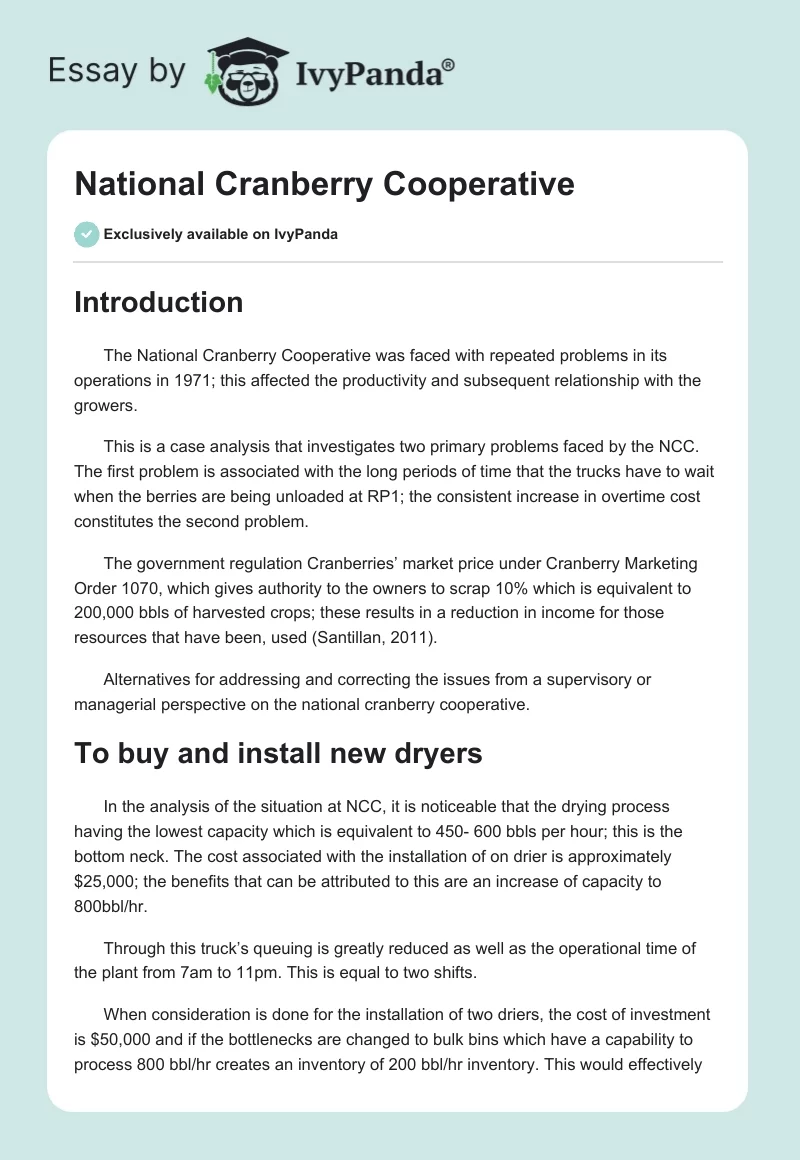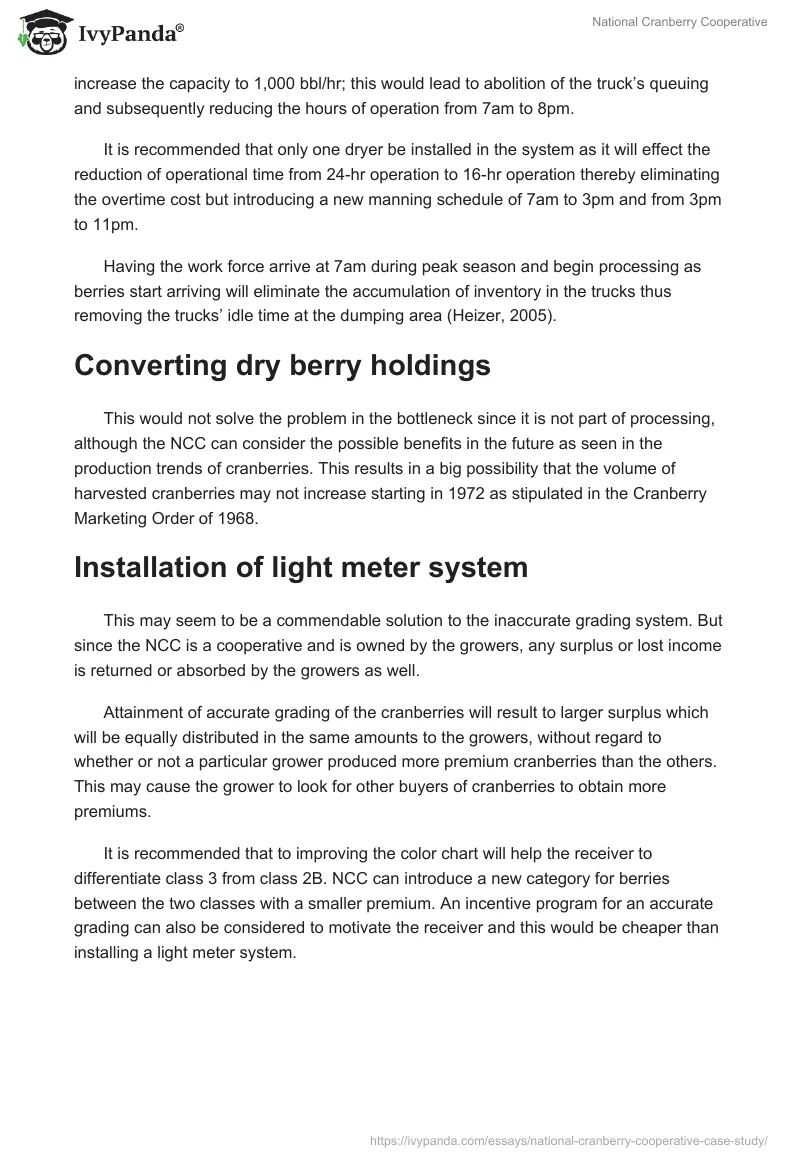Introduction
The National Cranberry Cooperative was faced with repeated problems in its operations in 1971; this affected the productivity and subsequent relationship with the growers.
This is a case analysis that investigates two primary problems faced by the NCC. The first problem is associated with the long periods of time that the trucks have to wait when the berries are being unloaded at RP1; the consistent increase in overtime cost constitutes the second problem.
The government regulation Cranberries’ market price under Cranberry Marketing Order 1070, which gives authority to the owners to scrap 10% which is equivalent to 200,000 bbls of harvested crops; these results in a reduction in income for those resources that have been, used (Santillan, 2011).
Alternatives for addressing and correcting the issues from a supervisory or managerial perspective on the national cranberry cooperative.
To buy and install new dryers
In the analysis of the situation at NCC, it is noticeable that the drying process having the lowest capacity which is equivalent to 450- 600 bbls per hour; this is the bottom neck. The cost associated with the installation of on drier is approximately $25,000; the benefits that can be attributed to this are an increase of capacity to 800bbl/hr.
Through this truck’s queuing is greatly reduced as well as the operational time of the plant from 7am to 11pm. This is equal to two shifts.
When consideration is done for the installation of two driers, the cost of investment is $50,000 and if the bottlenecks are changed to bulk bins which have a capability to process 800 bbl/hr creates an inventory of 200 bbl/hr inventory. This would effectively increase the capacity to 1,000 bbl/hr; this would lead to abolition of the truck’s queuing and subsequently reducing the hours of operation from 7am to 8pm.
It is recommended that only one dryer be installed in the system as it will effect the reduction of operational time from 24-hr operation to 16-hr operation thereby eliminating the overtime cost but introducing a new manning schedule of 7am to 3pm and from 3pm to 11pm.
Having the work force arrive at 7am during peak season and begin processing as berries start arriving will eliminate the accumulation of inventory in the trucks thus removing the trucks’ idle time at the dumping area (Heizer, 2005).
Converting dry berry holdings
This would not solve the problem in the bottleneck since it is not part of processing, although the NCC can consider the possible benefits in the future as seen in the production trends of cranberries. This results in a big possibility that the volume of harvested cranberries may not increase starting in 1972 as stipulated in the Cranberry Marketing Order of 1968.
Installation of light meter system
This may seem to be a commendable solution to the inaccurate grading system. But since the NCC is a cooperative and is owned by the growers, any surplus or lost income is returned or absorbed by the growers as well.
Attainment of accurate grading of the cranberries will result to larger surplus which will be equally distributed in the same amounts to the growers, without regard to whether or not a particular grower produced more premium cranberries than the others. This may cause the grower to look for other buyers of cranberries to obtain more premiums.
It is recommended that to improving the color chart will help the receiver to differentiate class 3 from class 2B. NCC can introduce a new category for berries between the two classes with a smaller premium. An incentive program for an accurate grading can also be considered to motivate the receiver and this would be cheaper than installing a light meter system.
Conclusion
It is expected that with the implementation of the recommendations that have been listed above, the management of NCC will be in a position to address the two problems that they are facing. These recommendations will ensure an efficient and improved approach to the management of NCC and ensure that the process improvement will be achieved and all the bottlenecks will be addressed effectively.
References
Heizer, J. H. (2005). Operations management. Pennsylvania: Pearson/Prentice Hall.
Santillan, C. A. (2011). Production and Operations Management. India: New Age Interantional.


